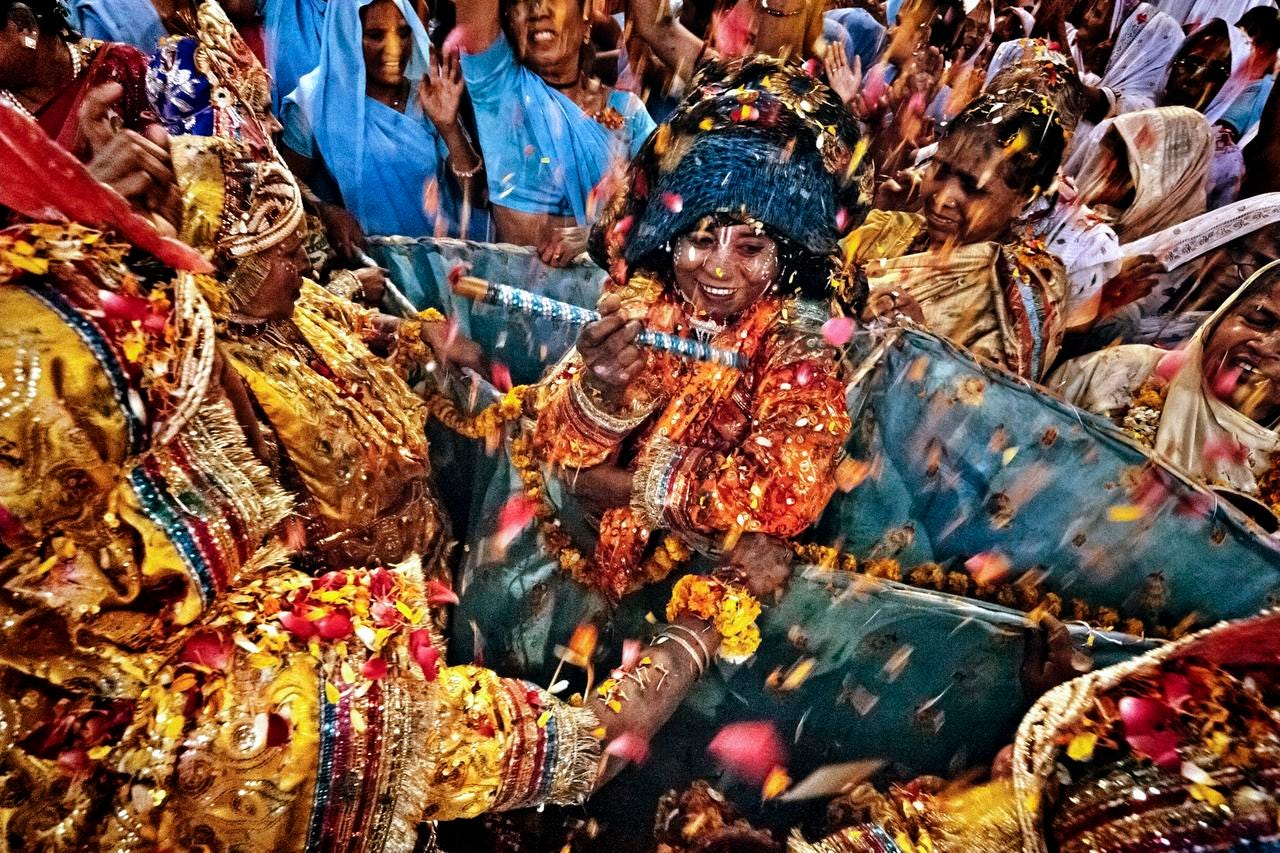How the Widows of Vrindavan Got Their Color Back
In a region of ancient Hindu lore, modern-day widows are condemned to a life of exclusion and humiliation. For one festive day last spring, everything changed.
Amriti is staring at the other women while they dance in a cloud of colors. She wears a shy smile and tears of joy dampen her eyes. Her white sari is stained with the colors of Holi, the Hindu festival that marks the beginning of spring. This is unusual for many Indian widows; tradition dictates that they mourn the memory of their husbands until they die.
In many areas of the subcontinent, widows still suffer abuse and humiliation. Considered pariahs by patriarchal Indian society, they are stigmatized by prejudices and superstitions. Mistreated and forced from home, many widows seek shelter in the holy city of Vrindavan, on the banks of Yamuna River, where Lord Krishna is believed to have spent his childhood, and where today thousands of neglected women live in the ashrams run by the government. They pray and wait to die.
Last year, for the first time since the death of their husbands sentenced them to a life of solitude and exclusion, the widows of Vrindavan sprinkled flowers and color…


